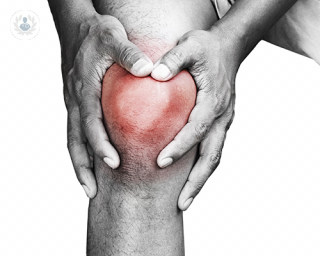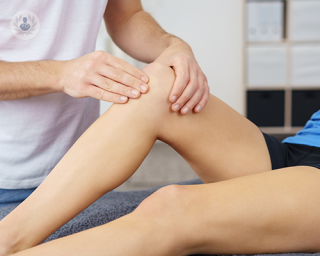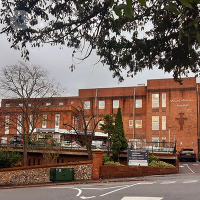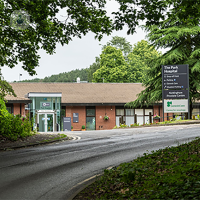Knee arthroscopy
Mr David Houlihan-Burne - Orthopaedic surgery
Created on: 11-13-2012
Updated on: 09-20-2023
Edited by: Aoife Maguire
What is knee arthroscopy?
Knee arthroscopy is a minimally invasive procedure that allows access to and treatment of injuries affecting the various structures of the knee joint. Two or three small incisions of less than a centimetre are made to allow access to the joint.
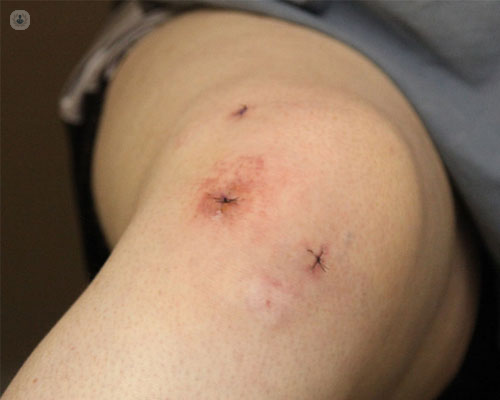
Most knee surgeries that do not involve implant placement are performed using full or partial knee arthroscopy. This is the preferred technique for treating many injuries since it allows for greater visualisation of the joint. All the points of the knee can be accessed in a minimally aggressive way in order to clean the cartilage, make small holes in the bone that lacks cartilage (microfractures), stabilise the cartilage and administer substances or elements (platelet-rich plasma or stem cells) to promote cartilage regeneration.
Knee arthroscopy is also used to complement open techniques, as it improves injury diagnosis and prognosis due to being less aggressive.
The surgery can be performed under local, regional or general anaesthetic depending on the injury and the individual. The anaesthetist will decide the best method in each case to reduce discomfort as much as possible.
Why is it performed?
Knee arthroscopy is used to treat knee injuries. One of the most common pathologies is meniscus injury and arthroscopy allows preservation of most of the meniscus since the resection is not complete but partial. Meniscal sutures and meniscus transplants through knee arthroscopy are common techniques for improving protection for the joint cartilage.
Another serious sports injury is rupture of the anterior cruciate ligament. Injury to this ligament causes instability in the knee, making it impossible for the person to practice almost any sport. If instability continues, it can damage surrounding structures such as the meniscus and cartilage. The anterior cruciate ligament must therefore be reconstructed with grafts, using arthroscopy to access the joint.
Another common problem is cartilage injury (chondropathy, osteoarthritis or osteochondritis). Preserving the cartilage will also preserve the joint, thus preventing wear of the knee.
What does it involve?
The orthopaedic surgeon will make small incisions in the knee to access the joint. They first fill the knee joint with a sterile solution and remove any cloudy fluid, which will allow them to see the joint clearly.
The specialist will then insert the arthroscope (a thin device with a camera at the end) into the knee. This device sends images to the TV monitor so that the surgeon can see all the structures in detail. Through the other holes, the surgeon inserts the surgical material that will allow them to treat the injury and repair the damaged structures.
The procedure rarely lasts more than an hour. After surgery, you will be transferred to a recovery room and will be able to leave the hospital within around two hours.
Preparing for knee arthroscopy
Prior to surgery, you will need to have a complete physical examination so that the specialist can evaluate your health and detect any possible abnormalities that may interfere with the arthroscopy. You should inform the surgeon of any medication you are taking, in case you need to stop taking some before the operation. Complementary preoperative tests will also be performed, such as an MRI scan, an electrocardiogram and blood tests.
Post-operative care
The recovery period after arthroscopy is shorter than after conventional open surgery. However, you must follow the specialist's instructions so that the knee can recover properly.
It is normal to experience some swelling in the days following surgery, so you should elevate the leg during those first few days. Applying ice will relieve any pain and reduce inflammation.
Keep the incisions clean and dry to aid healing. The specialist will tell you when it is okay for you to shower and change the dressing.
Shortly after the intervention, you should begin rehabilitation exercises with a physiotherapist, who will prepare a programme appropriate for you and the type of injury. This will strengthen the knee muscles and help restore movement.
Alternative treatments
The alternative to knee arthroscopy is conventional open surgery, which is currently only used in more severe cases, in which an implant is required. Any other technique would involve greater invasion of the knee and a more difficult postoperative stage.

